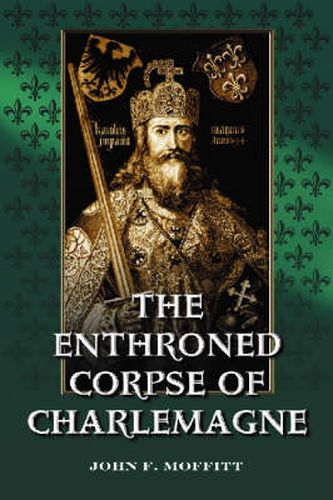Readings Newsletter
Become a Readings Member to make your shopping experience even easier.
Sign in or sign up for free!
You’re not far away from qualifying for FREE standard shipping within Australia
You’ve qualified for FREE standard shipping within Australia
The cart is loading…






Though unquestionably a
real
person, posthumously, the life and deeds of Charlemagne have become the stuff of heroic legend. The discovery of his corpse in the year 1000 by the emperor Otto III is just such an example. What was so striking about the corpse of Charlemagne (who had in fact died long before, in 814) was its appearance. Fully clothed in ceremonial garb and wearing his imperial crown, Charlemagne was found seated upright, reposing upon a gilded chair; thus, he appeared to the spectators in the then-conventional guise of a Maiestas Domini, or
Lord-in-Majesty.
This work focuses on a wholly new, historically and physically credible explanation for this melodramatic discovery of Charlemagne’s body by studying various historical traditions and cultural contexts. Topics such as Charlemagne’s legacy and Alfred Rethel’s Karlsfresken, Sainte-Foy as an imperial effigy and as an apocryphal figure, and contexts for and the meaning of Charlemagne’s Karlsgrab are all examined.
$9.00 standard shipping within Australia
FREE standard shipping within Australia for orders over $100.00
Express & International shipping calculated at checkout
Though unquestionably a
real
person, posthumously, the life and deeds of Charlemagne have become the stuff of heroic legend. The discovery of his corpse in the year 1000 by the emperor Otto III is just such an example. What was so striking about the corpse of Charlemagne (who had in fact died long before, in 814) was its appearance. Fully clothed in ceremonial garb and wearing his imperial crown, Charlemagne was found seated upright, reposing upon a gilded chair; thus, he appeared to the spectators in the then-conventional guise of a Maiestas Domini, or
Lord-in-Majesty.
This work focuses on a wholly new, historically and physically credible explanation for this melodramatic discovery of Charlemagne’s body by studying various historical traditions and cultural contexts. Topics such as Charlemagne’s legacy and Alfred Rethel’s Karlsfresken, Sainte-Foy as an imperial effigy and as an apocryphal figure, and contexts for and the meaning of Charlemagne’s Karlsgrab are all examined.